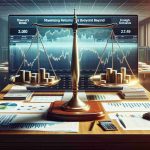Optimizing Light Usage
Today’s energy prices have fluctuated significantly, with the lowest cost recorded in the early hours, specifically between 5:00 and 6:00 AM at 91.98 euros/MWh. To make the most out of these lower rates, it is advisable to schedule high-energy consumption activities such as laundry or dishwashing during these off-peak hours.
Avoiding Peak Hours
Conversely, the costliest period for electricity consumption falls between 9:00 and 10:00 PM, reaching a high of 147.22 euros/MWh. During these peak hours, it is crucial to exercise prudence with the use of high-consumption appliances to avoid unnecessary expenses.
Strategic Time Management
For those seeking to monitor energy usage throughout the day, being aware of the varying prices per hour is essential. The hourly breakdown displays a range of costs, with rates lowering during the early morning and peaking during the evening hours. By strategically planning the use of electricity-intensive devices during off-peak periods, consumers can effectively manage their energy expenses.
Key Takeaway
By adopting a conscious approach to electricity consumption and leveraging the hourly price fluctuations, individuals can not only save on costs but also contribute to overall energy efficiency. Coordination of activities based on pricing patterns can lead to a more sustainable and cost-effective energy consumption strategy.
Enhancing Energy Efficiency through Smart Technologies
In addition to managing energy consumption based on hourly price fluctuations, the integration of smart technologies can further enhance energy efficiency within households. Smart thermostats, for example, enable users to regulate heating and cooling systems remotely, optimizing energy use based on occupancy patterns and preferences. Similarly, smart lighting systems can automatically adjust brightness levels and schedules to minimize electricity wastage.
Utilizing Renewable Energy Sources
Incorporating renewable energy sources, such as solar panels or wind turbines, into the energy mix can significantly reduce reliance on traditional grid electricity. These sources offer a sustainable and eco-friendly alternative, allowing households to generate their own electricity and potentially even contribute excess power back to the grid.
Most Important Questions:
1. How can smart technologies help in managing energy consumption effectively?
2. What are the benefits of integrating renewable energy sources into a household energy strategy?
3. Are there government incentives or subsidies available for promoting energy-efficient practices?
Key Challenges and Controversies:
– One challenge is the initial cost of implementing smart technologies and renewable energy systems, which can be a barrier for some households.
– Controversies may arise around the reliability and efficiency of renewable energy sources, as well as the environmental impact of manufacturing and disposing of smart devices.
Advantages:
– Lower energy bills through optimized usage and integration of renewable sources.
– Reduced carbon footprint and environmental impact.
– Increased control and awareness of energy consumption patterns.
Disadvantages:
– Upfront costs of implementing new technologies.
– Dependence on external factors such as weather conditions for renewable energy generation.
– Potential concerns about data privacy and security with smart devices.
For further information on energy management and sustainability practices, visit Energy.gov. This website offers comprehensive resources on energy-saving tips, renewable energy technologies, and government initiatives promoting sustainability in the energy sector.










More Stories
Game-Changer in Delivery! Glovo’s Bold Move Stuns Spain!
Maximizing Returns Beyond Treasury Bonds
Exploring the Rising Trends in European Banking